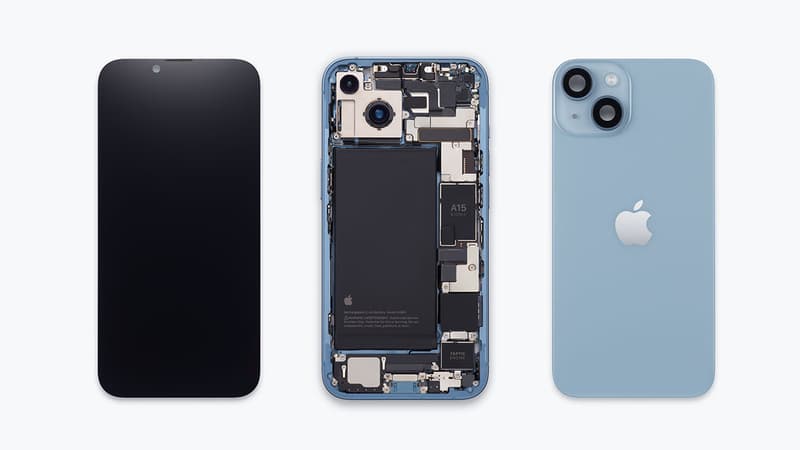It’s an unusual move at Apple: to reverse-engineer its own smartphone, models of which are usually shown in their best light. With Tech&Co, the brand reviews how it imagined the internal design of the iPhone 14. With one goal: to make component changes much easier, as the independent site iFixit pointed out in September 2022, going so far as to mention this evolution of “better performance” Of the device.
To understand the work of the Apple teams, you have to go back to the design of all iPhones since… the iPhone 4S, launched more than a decade ago. Since then, all models have been designed by attaching all major components to the rear.
Opening on both sides
“Internally, we describe this organization as a cube where the different components would be stored,” Richard Dinh, Apple’s head of iPhone design, explains to Tech&Co. With a problem that logically follows: to access it you have to open the lid.
With the iPhone 14, his teams gave repairmen the ability to open the device from both sides, with a now separate rear window. Once boned, it is divided into three parts: the two glass fronts (front and rear), as well as a central frame that houses the electronic components that can be repaired.
This easy access allowed the iPhone 14 to score 7/10 on iFixit. The organization called the product “the most repairable iPhone in years.” A good point for the brand, often the target of criticism on this subject, but which nevertheless wants to include this approach in its environmental ambitions.
The Pro version… for later
Efforts that allow the company to drastically reduce its repair costs. At least some of them. In case of damage, Apple charges 199 euros to change the back of the iPhone 14, compared to 399 euros for the previous model, due to the fixing of many components to this glass sheet.
Instead, it is still as expensive to change a broken screen (339 euros for the iPhone 14 as for the iPhone 13), and now more expensive to replace a battery to extend the life of the device (119 euros for the iPhone 14 against 75 euros for the iPhone 13).
However, during the exchange with Tech&Co, Apple did not address the issue of the iPhone 14 Pro. And for good reason, the latter, which still inherits the old internal architecture, remains just as complex to repair, at least outside of the circuit. Manzana.
If we can imagine that this more complex device, particularly with its space-hungry triple photosensor, represents a major challenge for Apple, we can only hope that it will also switch to this new era in 2023. When asked if this would be the case of upcoming high-end models, Apple very politely reached out.
Source: BFM TV


